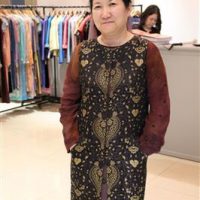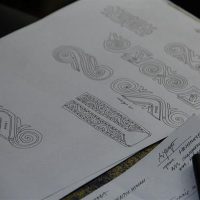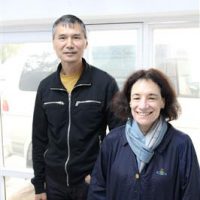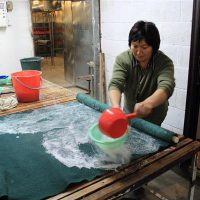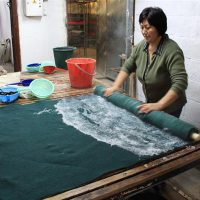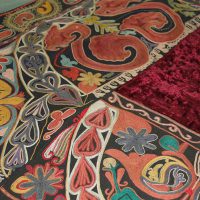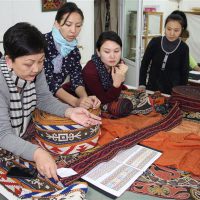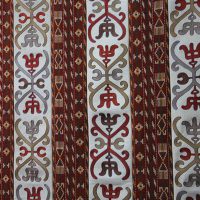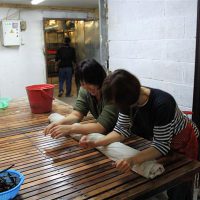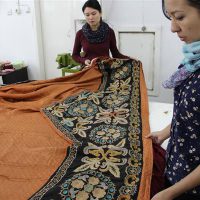Participating in the Art in Embassies program has been a great opportunity for me to
bridge my personal aesthetic with that of another country. It is still too soon to tell the real personal and cultural value of this experience, but I am already excited, and can feel the effects—personally and aesthetically—of my exposure to a new history and tradition of art making. I hope to further address these questions as I continue to develop this project for the embassy in Bishkek. Melissa Meyer
Melissa Meyer was invited by Art in Embassies to create a site specific, large scale commission for the new U.S. Embassy in Bishkek. In October of 2014, Melissa traveled to Kyrgyzstan to learn about historical and contemporary Kyrgyzs textile production. Meyer met with the Tumar Art Group and their designers for a “show and tell” explaining and illustrating the history of the Kyrgyzs patterns and the uses of felt and embroidery. The artist was shown some of Tumar’s archive of historical works and given a tour of an embroidery shop. The Northern designs, based on animals, and their Southern counterparts based on flowers, could function as possible inspiration for the artist’s final commission
The patterns and motives, besides being visually beautiful.. “made me realize that I was also interested in a correlation between the traditional Kyrgyzs arts and an article I researched and co-wrote with Miriam Schapiro in 1978 titled “Femmage”, which was originally published in the Heresies magazine issue called “Women’s Traditional Arts and the Politics of Aesthetics”. The artworks I was looking at were made before the collages of Picasso and Braque, and included quilts, devotional pieces made by nuns that were forerunners of valentines, and scrapbooks. If I had known about the art made by the women of Kyrgyzstan, I would have included it in the article.”
One morning during the Artist Exchange, Meyer met with Emil Tilekov, a contemporary, abstract artist who uses Shyrdak symbols in his artwork and who is an expert at interpreting the meaning of symbols in art and the history of their existence. Tilekov also runs the Temir Kanat Design Studio. The meeting of the two artists resulted in a wonderful exchange. As he and Meyer discussed their work, (with Meyer showing catalogues which included her works on paper, paintings, and public projects), Tilekov felt a kinship with Meyer’s use of abstract symbols. After the meeting, Meyer had a chance to tour the felt-making factory. That same day, Meyer met with Dilbar Ashimbai, the creative director of the Dilbar Fashion House, and viewed her beautiful creations which are a perfect example of melding traditional Kyrgyz symbolism with contemporary design in clothing and tapestry.
Meyer felt that the information , history, and aesthetic traditions that “ I was exposed to during this research and artist exchange trip, will facilitate and aid the process and inspiration for creating a proposal for the mural…it was exciting and important to spend time in a part of the world I’d never experienced before….In this time period when the world has gotten smaller through media and digital exposure, the Art in Embassies program offers a direct, in-person opportunity to familiarize ourselves cross-culturally…. No single moment on my trip was more important than the total—a short but extremely vivid and informative—experience.”
